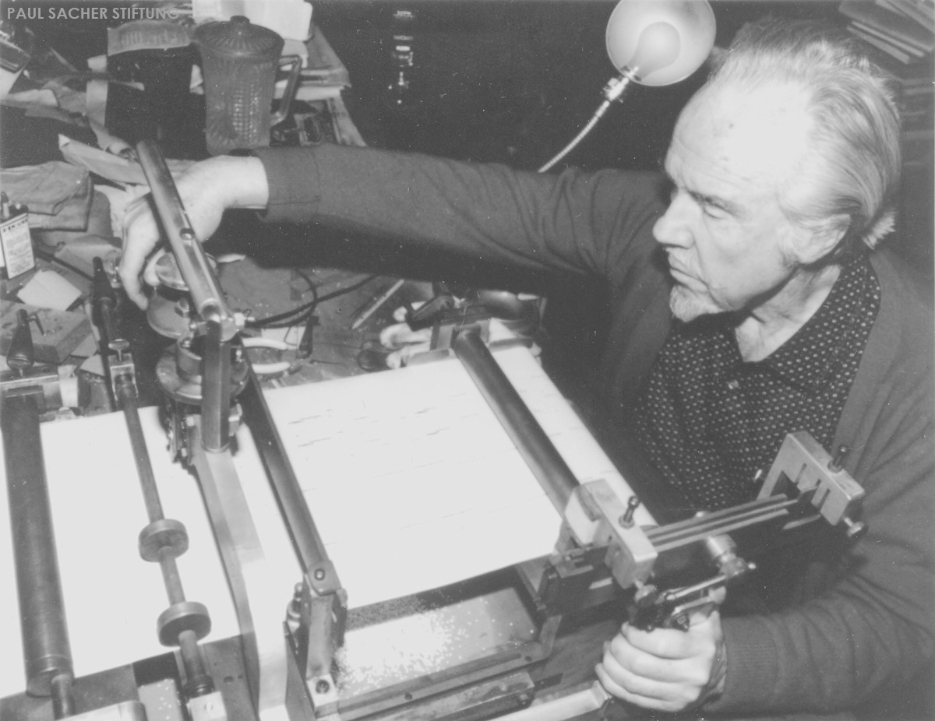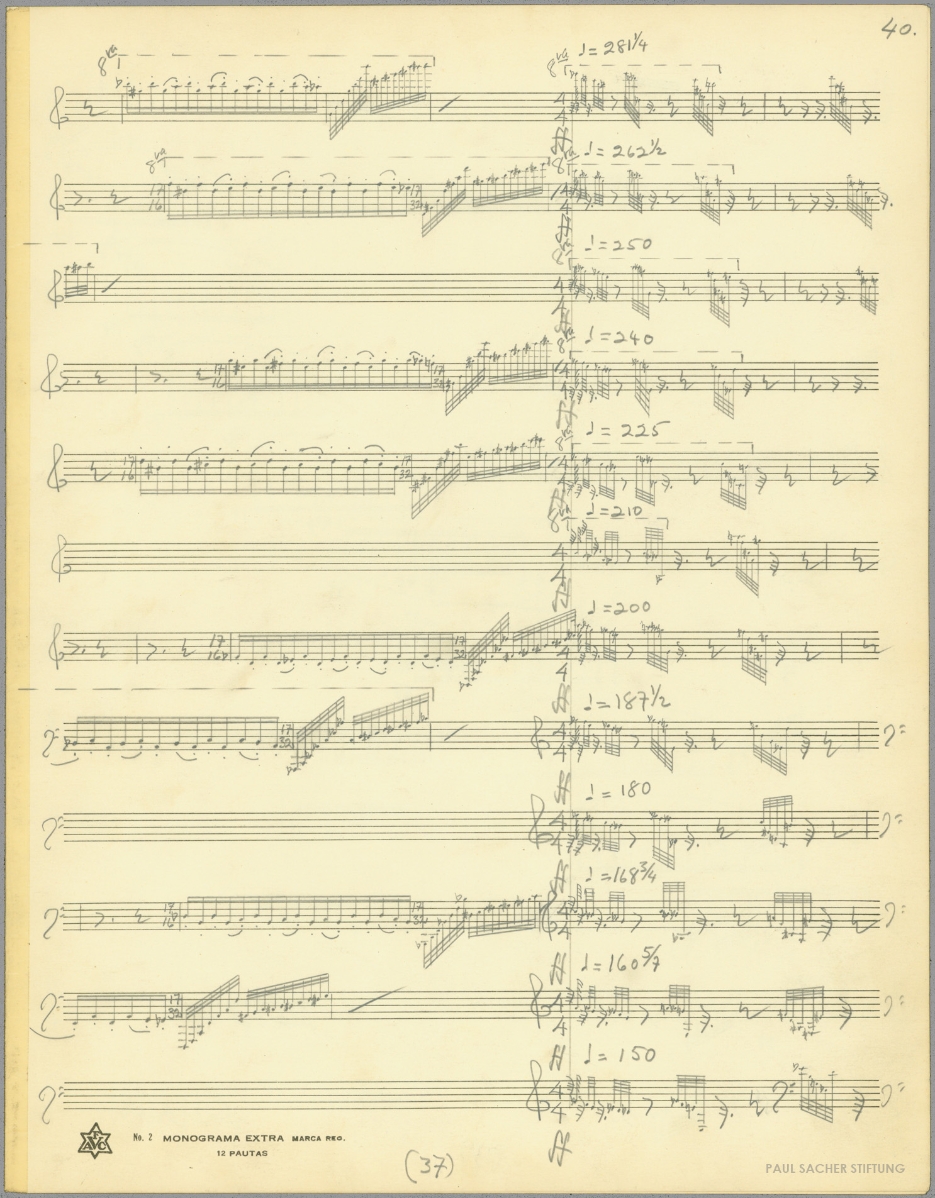Conlon Nancarrow's STUDIES FOR PLAYER PIANO
Towards a Critical Edition

A research project funded by the Swiss National Science Foundation, in collaboration with the Paul Sacher Foundation
August 2016 – January 2021
Project information at the Swiss National Science Foundation here
This website is under construction. Updates will follow.
Project Description | Identification of Documents | Acoustic Documentation of the Player Pianos | Nancarrow Sampler | MIDI Files of the Rolls | Music Engraving and Technical Tools | Critical Edition of Selected Works | Online Resources | Research Team and Contact
Project Description
The American/Mexican composer Conlon Nancarrow (1912–1997) is widely recognized as a prominent figure in the history of twentieth-century Western art music. His work has exerted a strong influence on composers as diverse as György Ligeti, Elliott Carter, James Tenney, and Frank Zappa and continues to shape aesthetic and technical concerns in younger generations of composers and performers worldwide. His legacy is unique in many regards. Remarkable is his devotion to the mechanical player piano for the greater part of his productive life. Exclusively dedicated to this rare instrument between 1948 and 1984, he authored a collection of over fifty Studies, some of them with several movements.
The possibilities of the player piano in the temporal domain had a special appeal for Nancarrow from the outset. Throughout his series of brief, yet highly condensed pieces, he kept exploring musical time, sometimes up to the very limits of perception. The ability of the instrument to perform at extremely high speeds and the departure from the natural limitations of human interpreters also shaped the music decisively. Nancarrow typically experimented with multiple simultaneous tempos, either underlining their coexistence – most often through canons with clear melodic and harmonic profiles – or combining them to create complex textural or gestural results. He also implemented different types of gradual tempo changes (geometric and arithmetic accelerandos and ritardandos). This experimentation, combined with the all-consuming demands of having to punch the player-piano rolls manually, influenced his musical thought and practice. After 1984, when he began to accept commissions for performers again, he kept on working with his mechanical instruments, producing rolls to test the music or adapting previously discarded player piano pieces to fulfill the requests.
The main goal of this project was to produce the first critical edition of a selected group of Nancarrow’s Studies for Player Piano. The research was based on the unique combination of sources and equipment surrounding his output: music manuscripts of diverse types, player-piano rolls, custom-modified player pianos, working equipment (i.e. punching machine, hand-made tempo templates), documentary recordings, and the composer’s personal correspondence. The majority of these items have been housed at the Paul Sacher Foundation since 1997. Further enhancements to the collection arrived in 1999 and 2013, with the transfer from Mexico City of the musical portion of Nancarrow’s extensive personal library and the acquisition of original manuscripts previously in the possession of Jürgen Hocker.
The project covered four complementary areas of research:
- Comparative study of the sources in the entire collection and identification of uncatalogued documents (e.g.: scores, player piano rolls, documentary recordings).
- Acoustic documentation of the player pianos and construction of a digital sampler – the “Nancarrow Sampler” – built with the sounds and operation noises of one of the original instruments.
- Development of technical tools (software development) and strategies for engraving the scores.
- Conception of an editorial model appropriate for the repertoire.
The four areas converged into the realization of a multimedia “Critical Edition of Selected Studies for Player Piano” to be published by Schott in hybrid form. The criteria for selecting the edited works was based on their lack of availability (approximately one third of the Studies, particularly the late ones, have remained unpublished), and the wide diversity of technical and editorial challenges they present.
This project is the first integrative investigation of the various types of sources related to Nancarrow’s output and has been conceived to set the technical and methodological bases, and to serve as model, for a future critical edition of his complete works.

